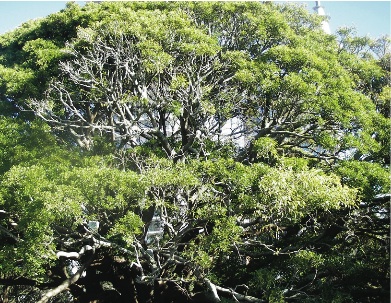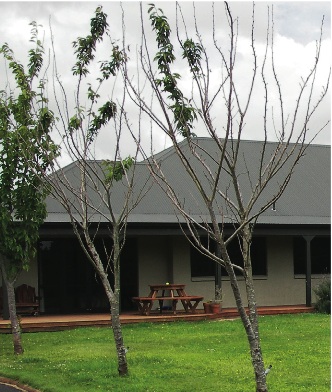PESTS AND DISEASES OF FORESTRY IN NEW ZEALAND
Sampling soil for pathogens of trees and shrubs
Scion is the leading provider of forest-related knowledge in New Zealand
Formerly known as the Forest Research Institute, Scion has been a leader in research relating to forest health for over 50 years. The Rotorua-based Crown Research Institute continues to provide science that will protect all forests from damage caused by insect pests, pathogens and weeds. The information presented below arises from these research activities.
From Forest Health News No. 177, September 2007.
Species of Phytophthora are particularly well-known soil-dwelling, root-infecting pathogens. A few Phytophthora spp. are able to carry on their life cycle above ground causing a variety of symptoms that include dieback and stem cankers, e.g., P. cactorum on ornamentals and especially on apples, P. hibernalis on citrus, P. citricola on various ornamentals, P. kernoviae on cherimoya.

Other species such as P. cinnamomi and P. megasperma rarely, if ever, infect the aerial parts of plants. In order to recognise and identify these Phytophthora spp. it as necessary to isolate and grow them in artificial culture from samples collected in the field. Stem lesions caused by Phytophthora spp. are often difficult to distinguish from cankers caused by other micro-organisms and isolation attempts from tree stems often fail to give a result. However, the resting spores of all Phytophthora spp. are ultimately shed into the soil through the decay of plant parts on the soil surface (stems and leaves) and in the soil (roots). Therefore even if the symptoms are on the stem or crown of the plant, soil samples should always be taken.
Although focusing on the collection of samples from soil, the following information is intended as a general guide to sampling for plant pathogens. When collecting soil samples examine any large roots that may be exposed. Intact sections of roots that are decayed and/or have patches of white mycelium penetrating the bark or forming layers under the bark should always be collected for laboratory examination. Intact sections of larger roots may reveal the presence
of Armillaria spp. or other basidomycete pathogens.
Soil sample: Primary fungal pathogens such as Phytophthora spp. prefer damp or wet conditions, so avoid sampling when soil is dry. Take several soil samples in a circle round the affected tree, between the drip line and the base of the tree. Put the 50 mm top layer, e.g., grass, weeds, and roots, to one side and remove a sample of soil/rootlets to a depth of about 250 mm. The depth is dependent on soil conditions and obstructions; stones, large roots, hard pan, etc., may be limiting. A narrow-bladed planting spade or soil auger is a useful tool. Put all the soil samples into one bag and if there is a duff layer include a handful of vegetation litter. The total soil sample should amount to about 1 litre (milk carton size). If sampling a continuous row of trees, e.g., shelter belt, spread the soil samples out so as to sample the area affected.

Wood sample: Sample the lesion or area of infection on the tree itself by digging in with a sharp chisel so that at least the cambium layer is captured (this may be quite deep if there is thick bark). The target area is the live/dead wood zone. It is often useful to include a branch sample of both leaves and wood, provided pathogens are likely to be present, e.g., lesions or fruit bodies on leaves, or staining in the wood. The leaves and branch wood should be at least partly alive. Root rot pathogens like Armillaria spp. can frequently be found under the bark at the base of the trunk.
Photos: Take photos of disease symptoms and include a description of general crown health as well as the environment the trees are growing in.
Sterilisation: Sterilise equipment used for sampling before working on another site. It is important to wash or wipe all organic matter including soil from digging and cutting equipment before sterilisation. Suggested agents include 2% TriGene®, 30% Janola®, or ethyl alcohol. The flame of a gas burner may be more practical for cutting equipment such as pruning loppers or secateurs. Leave the site with clean footwear.
Chris Inglis and Frank Hill,
MAF Biosecurity New Zealand,
Plant Health and Environment Lab,
IDC, Tamaki, Auckland,
with additional material by Margaret Dick
This information is intended for general interest only. It is not intended to be a substitute for specific specialist advice on any matter and should not be relied on for that purpose. Scion will not be liable for any direct, indirect, incidental, special, consequential or exemplary damages, loss of profits, or any other intangible losses that result from using the information provided on this site.
(Scion is the trading name of the New Zealand Forest Research Institute Limited.)

 Farm Forestry New Zealand
Farm Forestry New Zealand

